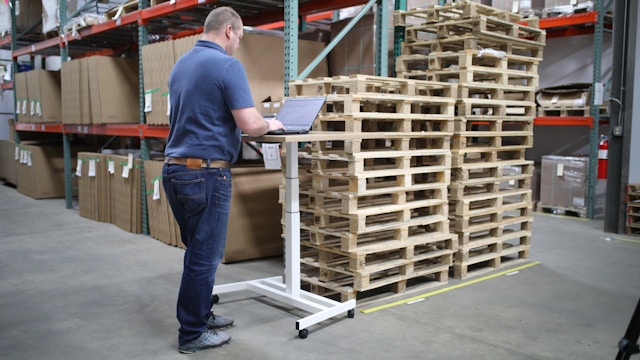Inventory control is the science of having just the right amount of inventory on hand at any one point in time. Modern data management systems are a useful tool for any supply chain team hoping to master the science.
Before the advent of modern inventory control technology, companies were often forced to carry large amounts of inventory at all times to avoid stockouts. It was difficult to access warehouse inventory levels at a moment’s notice, and customer demand forecasts were based on a limited number of data points. Fortunately, that’s no longer the case.
Here are a few of the ways in which data is revolutionizing inventory control.
1. Every Form of Inventory is Accounted For
When most people hear the word “inventory,” they picture items on shelves at a store. But ask someone who works in supply chain management and they will tell you: There’s much more to it than that.
In addition to items actually sold to the end customer, inventory also includes raw materials used in the manufacturing process, partly complete products, and items that support the manufacturing process. Each form of inventory requires constant attention. Raw materials, for example, must be replenished consistently through purchasing. Companies must also be aware of how many units are currently moving through the production process to replace recently sold items.
Needless to say, it can be challenging to manage all of these moving parts. With modern inventory control software, however, every unit of inventory is a data point. As raw materials arrive at the warehouse or production facility, operators create a record in the system. This tracking continues as these materials enter the production process and, finally, once they are ready to be shipped.
Supply chain managers can watch the entire process unfold, from the purchasing of raw materials through production until the moment a customer receives their order.
2. Automation Comes Standard
Until recently, inventory control involved many manual processes. Managers needed to constantly monitor inventory levels and make decisions accordingly.
Much of this work is now automated. Inventory control systems typically integrate with their vendors’ warehouse management software (WMS) solutions to ensure their processes are aligned. Operators can program inventory control systems to automatically perform a range of tasks when inventory levels reach a certain threshold. Some of these activities include:
- Ordering new raw materials when their stock begins to get low
- Triggering a cycle count, which is the process by which warehouse employees manually count inventory units and then record them in the system
- Pushing relevant data to integrated accounting software systems
By automating repetitive tasks, warehouses—and the supply chain as a whole—have become much more efficient. It’s also freeing up warehouse employees to perform higher-value activities, such as discovering process improvements.
3. The Bottom Line Impact is Clear
Storing goods in a warehouse can be expensive.
Many of the expenses related to storing a business’s inventory in a warehouse can be difficult to track and control. This includes:
- Lost goods
- Excess storage costs
- Spoilage
- Dead stock
While inventory control software cannot eliminate these costs entirely, it can significantly reduce many of them. For example, the software records the purchase and projected expiration date for every unit of inventory stored in a warehouse. If companies find raw materials are frequently expiring before being used in production, or that finished goods are expiring before reaching their customers, they can use these insights to inform conversations with their warehousing vendor.
Perhaps most importantly, the software puts data regarding the cost of storing a company’s goods at the fingertips of its supply chain team members. Leaders can use this data to inform their strategic decisions, such as deciding between suppliers of raw materials and locations of their warehouse facilities.
4. Preparedness for Spikes in Demand is Possible
It’s never a good idea to have too many items stored in a warehouse at any one time.
Excessively high stock levels can damage a company’s bottom line by increasing spending in areas such as storage costs and spoilage. But until recently, it was all too common because many businesses feared running out of stock and missing out on customer orders.
Inventory control software largely addresses this fear by keeping a record of inventory movement over time. Using complex algorithms, the system analyzes this massive dataset and detects patterns. It can then use these findings to predict future periods of rising and falling demand.
This ability to forecast future demand is especially important for smaller businesses. Some new businesses either scale too fast and purchase large quantities of material only to later find they overestimated customer demand for their products. For others, the opposite is true. In either case, inventory control software provides business leaders with the data they need to make decisions about the direction of their business during such periods of uncertainty.
A Better Future for Supply Chain Management
In the coming years, WMS and inventory control technology will only continue to improve, as providers incorporate artificial intelligence into their solutions. Luckily, if your company hasn’t already optimized its inventory control with data, there’s still plenty of time to get started.




















![TamilMV Proxy List Top 30+ [Unblock TamilMV Sites] TamilMV Proxy Unblock](https://technewsgather.com/wp-content/uploads/2023/04/17825836_SL-121019-25870-14-1-100x70.jpg)